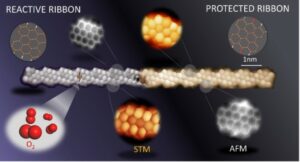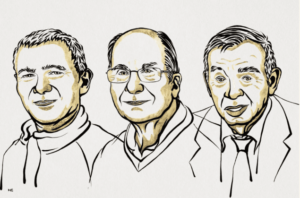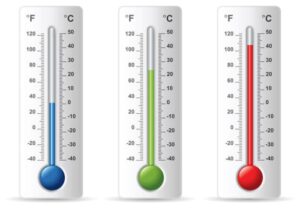
A new nanoscale device based on stacks of two-dimensional materials can not only generate a stream of single photons but can also control their chirality, or circular polarization, without the need for an applied magnetic field. Since manipulating a photon’s polarization state is a way to encode information in it, the advance could be important for quantum technologies, according to the researchers at the Los Alamos National Laboratory in the US who developed it.
Until now, circularly polarizing a single-photon stream was only possible by coupling quantum emitters to complicated photonic or electronic nanoscale devices or by applying high magnetic fields to these emitters via bulky superconducting magnets. In the new work, a team led by physicist Han Htoon stacked a single-molecule-thick layer of a semiconducting material, tungsten diselenide (WSe2), atop a thin layer of a magnetic crystal, nickel phosphorus trisulphide (NiPS3). The researchers then made indentations in the heterostructure stack measuring just 400 nm across.
Getting the indentations right
“We obtain two very useful effects from the indentations,” Htoon explains. “First, the indentations create a ‘well’ or depression in the potential energy landscape of the material that confines electron-hole pairs (excitons) within the WSe2 layer. “These excitons, in a quantum state, are capable of emitting a single-photon stream upon excitation with laser light. Second, the indentations also disrupt the magnetic properties of the underlying NiPS3, thereby creating a local magnetic moment that points up out of the heterostructure.”
The combination of this magnetic moment and the “proximity effect” of the quantum state is what creates the circularly polarized photons, he tells Physics World, but getting it right was not easy. “NiPS3 is an antiferromagnetic semiconductor and the spins of its rows of Ni ions typically lead to its magnetic moments cancelling out,” he explains. “Our initial experiments were disappointing due to this effect.”
Xiangzhi Li, the Los Alamos postdoctoral researcher who led the experiment, therefore performed the measurements again, this time using the tip of an atomic force microscope to create the nanoscale indentations in the stacked layers. “That adjustment created what we believe is the strongest effect of circularly polarized single photons yet,” says Htoon. “We were surprised and conducted a series of controlled experiments to confirm our findings.”

Chiral detection of molecules gets a laser-driven boost
Since information can be encoded in the polarization of photons, the advance could have applications in quantum communications, including quantum cryptography, and quantum computing, the team say. “We may even be able to create an ultra-secure quantum Internet because, if we’re able to couple the photon stream into waveguides (conduits of light), we could fabricate photonic circuits that control the direction of the photons’ propagation,” explains Htoon.
The researchers are now searching for the best way of modulating the degree of circular polarization of the single-photon stream using optical, electrical or microwave methods. They report their present work in Nature Materials.
- SEO Powered Content & PR Distribution. Get Amplified Today.
- PlatoData.Network Vertical Generative Ai. Empower Yourself. Access Here.
- PlatoAiStream. Web3 Intelligence. Knowledge Amplified. Access Here.
- PlatoESG. Carbon, CleanTech, Energy, Environment, Solar, Waste Management. Access Here.
- PlatoHealth. Biotech and Clinical Trials Intelligence. Access Here.
- Source: https://physicsworld.com/a/nanoscale-device-produces-a-stream-of-chiral-single-photons/
- :is
- :not
- $UP
- 400
- 700
- 90
- a
- Able
- According
- across
- Adjustment
- advance
- again
- also
- an
- and
- applications
- applied
- Applying
- ARE
- artist
- AS
- At
- based
- BE
- because
- believe
- BEST
- but
- by
- CAN
- capable
- combination
- Communication
- Communications
- complicated
- computing
- conducted
- Confirm
- control
- controlled
- could
- Couple
- create
- created
- creates
- Creating
- cryptography
- Crystal
- Degree
- depression
- Detection
- developed
- device
- Devices
- different
- direction
- disappointing
- Disrupt
- due
- easy
- effect
- effects
- Electronic
- emission
- Emissions
- energy
- Even
- experiment
- experiments
- Explains
- field
- Fields
- findings
- For
- Force
- from
- generate
- getting
- Have
- he
- High
- http
- HTTPS
- if
- image
- important
- in
- Including
- information
- initial
- Internet
- into
- issue
- IT
- ITS
- jpg
- just
- laboratory
- landscape
- laser
- layer
- layered
- layers
- lead
- Led
- light
- local
- los
- Los Alamos National Laboratory
- made
- Magnetic field
- Magnets
- manipulating
- material
- materials
- max-width
- May..
- measurements
- measuring
- methods
- Microscope
- models
- moment
- Moments
- National
- Need
- New
- Nickel
- now
- obtain
- of
- on
- only
- or
- Orange
- our
- out
- pairs
- performed
- Photons
- Physics
- Physics World
- pink
- plato
- Plato Data Intelligence
- PlatoData
- points
- possible
- potential
- present
- produces
- propagation
- properties
- Quantum
- quantum computing
- quantum cryptography
- quantum information
- Quantum Internet
- R
- report
- researcher
- researchers
- right
- Rise
- s
- say
- says
- searching
- Second
- semiconductor
- Series
- showing
- since
- single
- spins
- stack
- stacked
- Stacks
- State
- stream
- surprised
- team
- Technologies
- tells
- that
- The
- their
- then
- thereby
- therefore
- These
- they
- this
- thumbnail
- time
- tip
- to
- true
- two
- typically
- underlying
- upon
- us
- used
- using
- very
- via
- was
- Way..
- we
- Wells
- were
- What
- WHO
- with
- within
- without
- Work
- world
- yet
- zephyrnet

